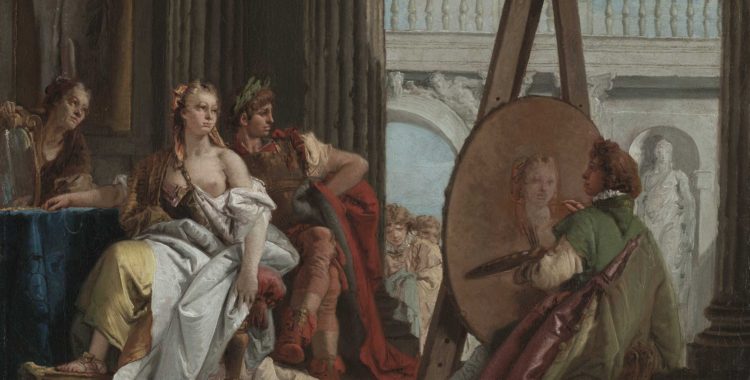
What Makes a Cluster Creative?
June 21, 2015
by Diana Greenwald | Filed in: Conferences • Interdisciplinary
From June 19th to 20th, the School of English and Economics Department at Trinity College Dublin (TCD) jointly hosted Creative Networks and Cultural Output: Economic Contexts for Literary and Artistic Production. The two-day conference raised a dozens of interesting questions. This post and the following one will explore a handful of these questions. Each post will address a particular theme, ranging from the effect of “clustering” on creative output to the theoretical value of sociological concepts of cultural engagement.
Largely under the influence of Prof. John O’Hagan, a group of economic researchers at TCD have been studying the effects of “clusters” of artistic individuals—painters, writers, composers—on the quality and quantity of an individual’s output. Prof. O’Hagan provided an introduction to the existing literature and theories about the benefits of artist gathering together in a particular city or artists’ colony. Referencing the book Collaborative Circles (Chicago, 2001) and a recent article in the journal Poetics, O’Hagan stated: it is well established that creative clusters exist and that they foster more artistic output. The remaining questions are why and how they foster this output.
Several papers presented at the conference aimed to use quantitative methods to answer these questions. Prof. Christiane Hellmanzik of the University of Hamburg presented on how the participation of artists in certain nineteenth and twentieth century group shows are strong predictions of contemporary auction prices. Prof. Karol Borowiecki provided an overview of his research on classical music composers. He presented on the impact of both cluster-size and emotional well-being on composers’ productivity. Trinity Economics doctoral student Sara Mitchell was able to isolate the particular positive effect of living in London on writers’ productivity.
Eve Patten—Professor in the School of English at TCD and co-organizer of the conference—asked a novel and intriguing question about the value of clusters. After Hellmanzek’s paper, she asked the speakers: what is the difference between a cluster of artists linked to an artistic movement and the term “school of” often applied to artists working prior to the Nineteenth Century? Why are Monet, Renoir and Degas called the Impressionists while many accomplished Italian Renaissance painters are described as being members of the “School of Titian” or “School of Raphael”?
There may be some easy structural answers to this question. Bettet records from more recent centuries means that scholars have more resources to study individuals—and individuals beyond just the greatest masters—rather than groups. However, moving beyond these structural answers, the question alludes to issues about which kinds of clusters foster the greatest quantity and highest quality of creative output.
The term “school of” implies a vertical relationship between master and student, between leader and follower. This was—for centuries—the standard structure of a group of artists. Young painters would train by working as an apprentice in the workshop of an established artist. From the Nineteenth Century forward, this model started to change. Groups of artists—like the Impressionists—began to gather in a less hierarchical way. They were more like experimenting peers than master and students. Both of these groups of artists—the workshop and the peer group—are clusters. Which one generates more innovation and better works of art? There is (currently) no clear answer. However, answering a question like this could be part of the process of scholars understanding how the relationship of artists in a cluster to one another has an effect on their artistic output.
Art, Economics & The Cultural Omnivore >>
<< Arts & Econ Wants You… To Write For Arts & Econ!
